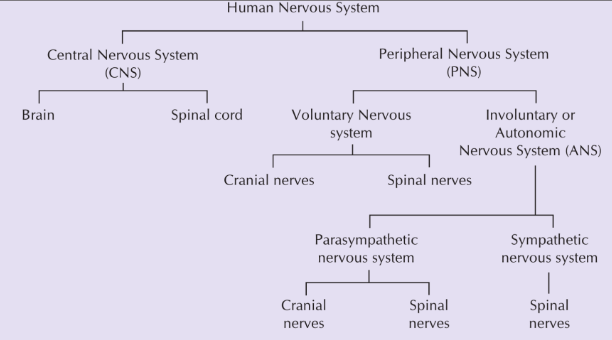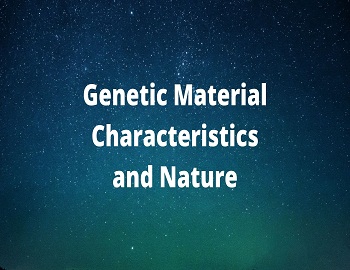Table of Contents
Nervous System:
The nervous system receives information about external & internal changes, communicates the information to different parts of the body & coordinates the activities of the different organs & organ systems. The nervous system includes the following parts- brain, spinal cord, nerves & the five sense organs namely eyes, ears, nose, tongue & skin.

Brain (Encephalon):
- It is present in the head region, inside the skull bone i.e. Cranium.
- It is about 1200-1400 gms & constitutes 98 % weight of the central nervous system.
- The brain is divided into three parts – forebrain, midbrain & hindbrain.
The forebrain contains the cerebrum which is the largest part of the brain. The cerebrum is divided into right and left cerebral hemispheres. The cerebrum controls all mental activities or Voluntary activities like memory, intelligence, reasoning, emotions & sensations.
The hindbrain contains the cerebellum (the second largest part of the brain) and the medulla oblongata. Medulla oblongata controls complex activities like breathing, swallowing, coughing, sneezing, blood pressure etc.
The midbrain connects the cerebral hemispheres with the hindbrain.
Spinal cord:
- It is a tube-like structure connected to the medulla oblongata that comes out through a hole in the skull.
- The spinal cord is protected by the vertebral column (backbone).
Nerves:
- Nerves arise both from the brain & the spinal cord.
- They connect the brain & spinal cord to different parts of the body.
- Nerves arising from the brain are called cranial nerves, while those arising from the spinal cord are called spinal nerves.
- Nerves carry messages from the sense organ to the brain.
- The brain interprets the message & decide how to react to the message received.
- Again, it sends messages through nerves to the respective organ where the response has to be shown.
Transmission of information:
- The basic functional & structural unit of the nervous system is the nerve cell called the neuron.
- The neurons are arranged end to end.
- They transmit messages along their length from one neuron to the next.
- This is how messages are carried from a sense organ to the spinal cord & brain & back.
The brain & spinal cord constitute the central nervous system.
The cranial nerves & spinal nerves constitute the peripheral nervous system.
Functions of Nervous System:
(1) It controls and regulates the activities of different parts and organs of the body.
(2) It regulates the internal environment of the body by coordinating the working of various glands and tissues of the body.
(3) It helps the organisms to react to the external environment through various sense organs.
(4) It stores the impressions of previous stimuli and retrieves these impressions to guide the organism and are termed as memory.









Comments (No)